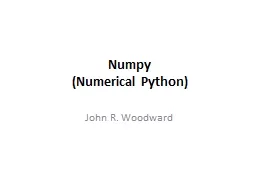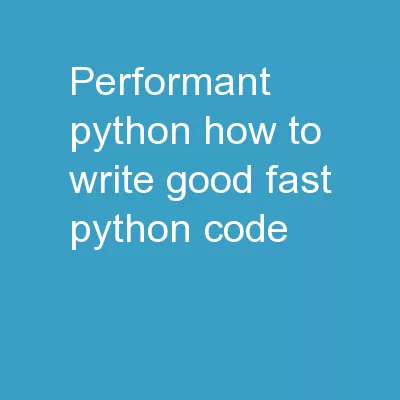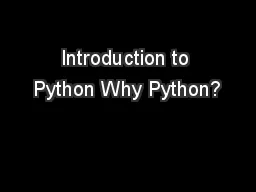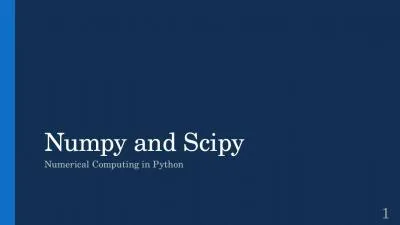PPT-CS229 Python & Numpy
Author : tawny-fly | Published Date : 2019-12-17
CS229 Python amp Numpy Jingbo Yang Andrey Kurenkov How is python related to with others Python 20 released in 2000 Python 27 endoflife in 2020 Python 30 released
Presentation Embed Code
Download Presentation
Download Presentation The PPT/PDF document "CS229 Python & Numpy" is the property of its rightful owner. Permission is granted to download and print the materials on this website for personal, non-commercial use only, and to display it on your personal computer provided you do not modify the materials and that you retain all copyright notices contained in the materials. By downloading content from our website, you accept the terms of this agreement.
CS229 Python & Numpy: Transcript
Download Rules Of Document
"CS229 Python & Numpy"The content belongs to its owner. You may download and print it for personal use, without modification, and keep all copyright notices. By downloading, you agree to these terms.
Related Documents










![[FREE]-Python for Data Analysis A Step by Step Guide to Master the Basics of Data Analysis](https://thumbs.docslides.com/970071/free-python-for-data-analysis-a-step-by-step-guide-to-master-the-basics-of-data-analysis-in-python-using-pandas-numpy-and-ipython-data-science.jpg)
![[FREE]-Python for Data Analysis A Complete Beginner Guide for Python basics, Numpy, Pandas,](https://thumbs.docslides.com/970584/free-python-for-data-analysis-a-complete-beginner-guide-for-python-basics-numpy-pandas-seaborn-bokeh-and-matplotlib-for-data-analysis-machine-learning-data-science-for-beginners.jpg)
![[READ]-Python for Data Analysis: A Step by Step Guide to Master the Basics of Data Analysis](https://thumbs.docslides.com/974518/read-python-for-data-analysis-a-step-by-step-guide-to-master-the-basics-of-data-analysis-in-python-using-pandas-numpy-and-ipython-data-science.jpg)

